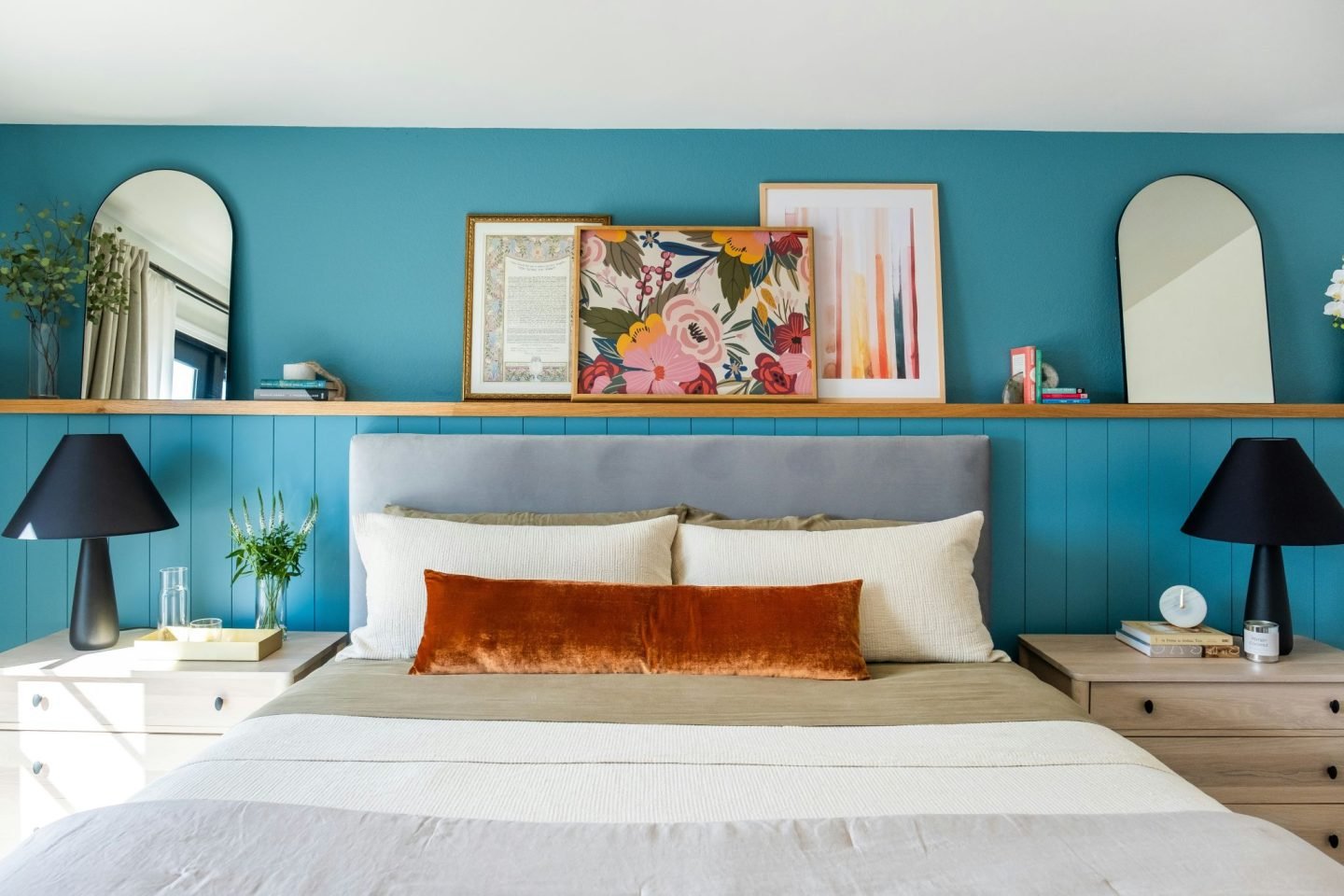
Effective Bedroom Design with AI: The Cutting-edge Approach
Introducing Artificial Intelligence in the Field of Interior Design
Artificial Intelligence (AI) has become a significant driving force in multiple sectors, transforming industries ranging from healthcare to transportation. While traditional interior design has long relied on human creativity and intuition, the integration of AI is now being embraced to elevate both the visual appeal and practical functionality of spaces. This fusion of technology presents unprecedented opportunities for customization and optimization, positioning AI-driven bedroom design as a compelling frontier in contemporary home décor.
The Influence of AI Across Diverse Sectors
By efficiently processing extensive datasets and conducting intricate analyses, AI has reshaped industries by automating tasks, enhancing decision-making processes, and unveiling insights that were previously inaccessible. In fields like healthcare, AI supports diagnostics and personalized treatment approaches; within finance, it refines investment strategies; and in transportation, it enables self-driving systems. Similarly, within interior design, AI algorithms are fundamentally altering how spaces are envisioned, planned, and adorned.
AI-Powered Bedroom Design: The Conceptual Framework and Advantages
Utilizing algorithms and machine learning models, AI-driven bedroom design aims to craft personalized, efficient, and visually appealing spaces. Departing from conventional design practices heavily reliant on human expertise and subjective tastes, AI introduces a data-driven methodology that accounts for variables such as room dimensions, natural lighting patterns, furniture arrangement options, and occupant behavior.
Advantages of AI-Enhanced Bedroom Design
Personalization: Through analyzing user preferences, lifestyle patterns, and aesthetic inclinations, AI algorithms develop bespoke bedroom designs tailored to individual requirements. Whether prioritizing relaxation or productivity needs or aiming for multifunctionality, AI ensures each design mirrors the occupant’s character traits and priorities.
Efficiency: By simulating various spatial layouts and furniture placements, AI optimizes spatial utilization. This not only maximizes available space but also enhances traffic flow and operational efficiency within the bedroom setting.
Elevated Aesthetics: Leveraging colour schemes recommendations or decor suggestions that align with architectural elements and personal style choices enhance visual cohesion. Additionally generating custom artwork or offering art recommendations that complement the overall design scheme further enriches the bedroom’s visual appeal.
Flexibility: As occupant needs evolve over time, designs powered by AI can adapt to accommodate shifts in lifestyle choices or family dynamics. This adaptability ensures that the bedroom remains functional while maintaining aesthetic allure throughout its lifespan. Integration with Smart Home Technology: AI enables seamless integration with smart home devices, allowing for automated control of lighting, temperature, and environmental settings based on user preferences and real-time data. This feature enhances comfort and convenience while also improving energy efficiency.
Innovation and Inspiration: Design tools powered by AI spark creativity by providing unique design solutions and innovative approaches that may not be explored through traditional methods. Both designers and homeowners benefit from AI’s capacity to explore unconventional ideas and push the boundaries of bedroom design possibilities.
In summary, AI serves as more than just a tool for task automation; it acts as a catalyst for innovation and personalization in interior design, especially within the intimate space of bedrooms. By leveraging the capabilities of AI, designers and homeowners can create spaces that are visually appealing, functional, adaptable, and tailored to meet the distinct preferences and lifestyles of those occupying them. As technology progresses, the potential for AI to revolutionize bedroom design remains vast, promising a future where each bedroom embodies a harmonious fusion of art, science, and personal expression. Integration with smart home systems has been greatly improved by AI, enabling furniture pieces equipped with sensors or connectivity features to seamlessly interact with other devices. For instance, beds powered by AI can adjust firmness based on user preferences and monitor sleep patterns to enhance comfort.
AI tools have been developed specifically for aiding users in selecting smart furniture. Some examples include:
– Havenly: Utilizes AI algorithms and human interior design expertise to recommend furniture pieces and decor items that match the user’s style and space requirements.
– IKEA Place: Employs augmented reality (AR) powered by AI to visualize how IKEA furniture will look in the user’s bedroom, assisting in making informed purchasing decisions.
– Crate & Barrel 3D Room Designer: Provides a virtual room planner using AI to propose furniture layouts and visualize how different pieces fit within the space.
– Wayfair’s Room Planner: Utilizes AI to suggest furniture based on style preferences and room dimensions, allowing users to virtually arrange and visualize furniture layouts in real-time.

The benefits of AI-driven furniture selection include:
– Time Efficiency: AI streamlines the selection process by offering curated recommendations based on specific criteria, reducing time spent browsing through catalogs or visiting showrooms.
– Personalization: Tailoring furniture recommendations to individual preferences ensures that each piece contributes to a cohesive and personalized bedroom design.
– Enhanced Decision-making: By visualizing furniture a bed within the bedroom environment through AR or virtual simulations, users can make more informed decisions regarding style, size, and functionality.
– Innovation and Inspiration: AI-driven platforms often propose creative solutions or design combinations that inspire users to explore new possibilities in bedroom decor.
Personalized space planning is another area where AI excels. It analyzes room dimensions, furniture sizes, and traffic flow to optimize bedroom layouts. By processing data on spatial constraints alongside user preferences, AI algorithms generate multiple layout options that maximize both functionality and aesthetic appeal. AI technology offers various benefits for space planning and design. It can accurately measure room dimensions, optimize furniture placement for efficient space utilization, simulate traffic flow to ensure accessibility, and suggest ergonomic furniture arrangements to enhance user comfort and well-being.
There are several AI-powered tools available for space planning, such as Space Designer 3D, Planner 5D, and Roomstyler 3D Home Planner. These tools utilize AI features to automatically adjust furniture placement based on room dimensions, suggest layout options for maximizing space efficiency, and provide real-time rendering capabilities for experimenting with different designs.
Additionally, AI algorithms play a significant role in recommending colour schemes and lighting solutions to improve the ambiance and functionality of bedroom spaces. By analyzing room characteristics and adjusting lighting configurations based on user preferences and activities, AI contributes to energy efficiency and enhances mood within the environment.
Furthermore, AI-generated art adds a personalized touch to bedroom decor by creating custom artwork based on user preferences and integrating digital art into physical spaces. Applications like DeepDream use neural networks to transform photographs into unique artistic interpretations that complement modern bedroom aesthetics. Artbreeder provides a platform for users to blend and transform images through AI technology, resulting in unique visual designs that can be customized to suit the preferred aesthetic and ambiance of a bedroom setting.
AI plays a crucial role in enhancing climate control systems by regulating temperature and air quality according to occupancy levels and external factors. The benefits of AI in this domain include optimizing energy usage by analyzing environmental data and user habits to adjust heating, ventilation, and air conditioning settings for efficiency while maintaining comfort. Additionally, AI sensors detect pollutants and allergens in the bedroom environment, prompting ventilation or purification systems to uphold healthy indoor air quality.
Integrating AI with smart home devices enables seamless automation of climate control based on user preferences and real-time data, thereby increasing convenience and comfort. These AI-driven systems adapt to seasonal variations and changing occupancy patterns, ensuring ideal indoor conditions throughout the year.
AI technologies cater to diverse requirements in bedroom design, offering accessibility features for elderly or disabled individuals. For instance, AI can recommend furniture designs that accommodate mobility aids or ergonomic needs to ensure comfortable navigation and utilization of space for all users. Moreover, AI-powered sensors and monitoring systems deliver real-time assistance and alerts for users with specific requirements, bolstering safety and independence.
By integrating voice command capabilities for lighting, temperature control, and security systems, AI facilitates hands-free operation for users with limited mobility. Smart assistive devices like adjustable smart beds cater to personalized comfort settings, enabling independent living for individuals with physical limitations.
Incorporating AI devices into bedroom environments necessitates a focus on maintaining data privacy and security. This involves implementing practices such as data encryption for secure storage and transmission of personal information, obtaining user consent through transparent disclosure of data collection practices, conducting regular updates on AI devices to prevent vulnerabilities, breaches, ensuring secure operation.
Establishing clear privacy policies outlining data handling procedures and user rights is imperative for building trust between users and providers when utilizing AI technology in bedroom settings. User Empowerment: Providing users with the ability to control their data by offering options to manage, delete, or limit data sharing as necessary.
Enhanced Security Protocols: Employing strong cybersecurity measures like multi-factor authentication and routine security assessments to protect user data and device security.
Future Trends and Advancements
Anticipated AI Progress in Bedroom Design
Upcoming developments in bedroom design might entail:
Virtual Reality (VR) and Augmented Reality (AR): AI-driven VR/AR tools for immersive design experiences, enabling users to virtually explore and customize bedroom layouts and decorations.
Predictive Design: AI algorithms predicting user preferences and lifestyle changes, facilitating proactive adjustments to bedroom design features.
Biometric Integration: AI-powered devices integrating biometric information such as sleep patterns and health data to personalize environmental settings and improve user well-being.
Forecasts on Future AI Applications in Tailored Experiences
Emotional Awareness: AI recognizing and responding to emotional signals, crafting environments that adjust to occupants’ moods and psychological requirements.
Collaborative Design: AI streamlining collaborative design processes, allowing multiple users to contribute to and refine bedroom designs in real-time.
Sustainability: AI advocating for sustainable practices in bedroom design by optimizing resource utilization and reducing environmental impact through energy-efficient solutions and eco-friendly materials.
Conclusion
AI serves as a transformative tool for creating innovative and efficient bedroom designs, providing tailored solutions that elevate comfort, functionality, and aesthetic appeal. Through the utilization of AI technologies, designers and homeowners can achieve spaces that cater not only visually but also functionally to individual preferences and lifestyle needs. As technology progresses, the integration of AI holds the promise of reshaping bedroom design into harmonious combinations of artistry, science, and personal expression.
